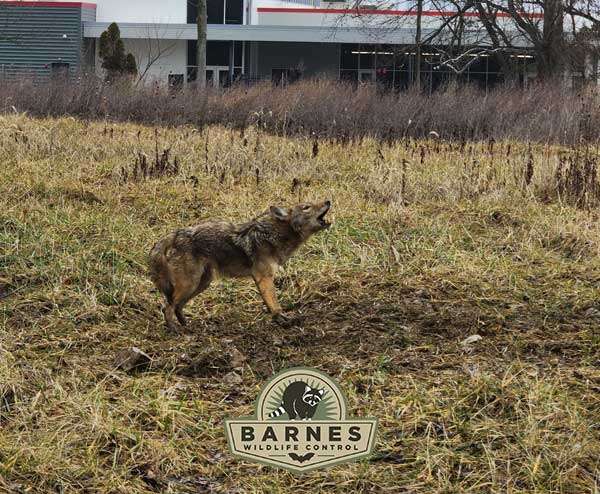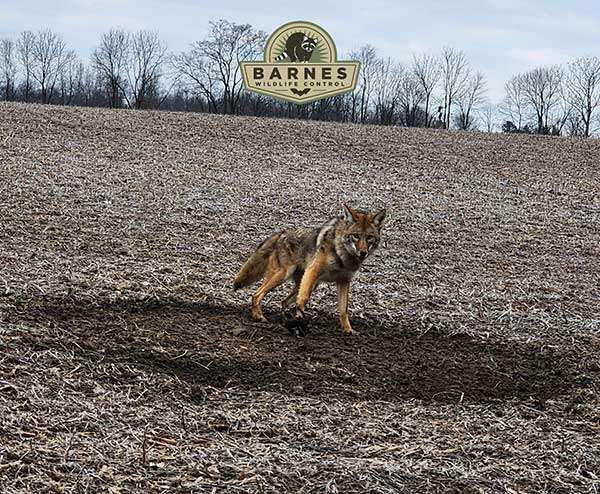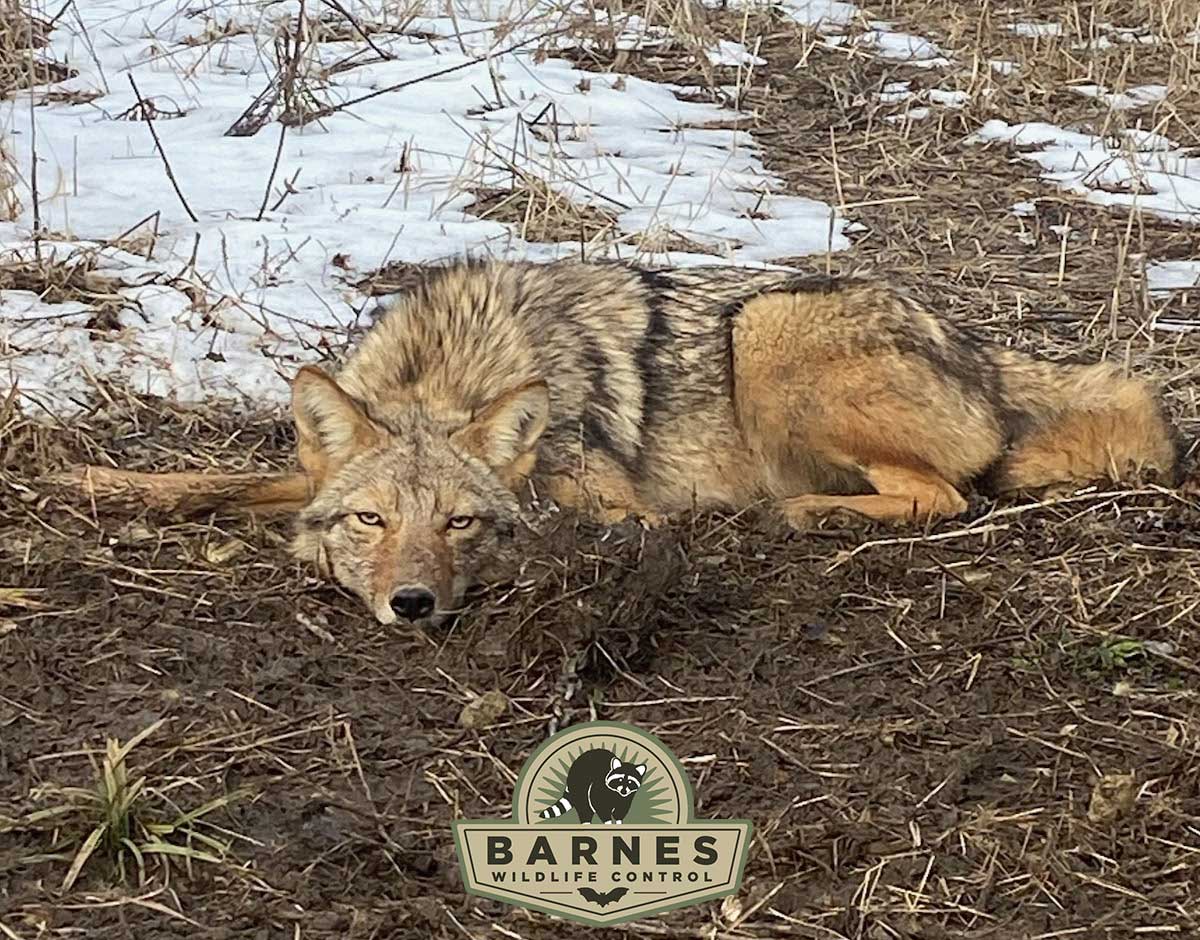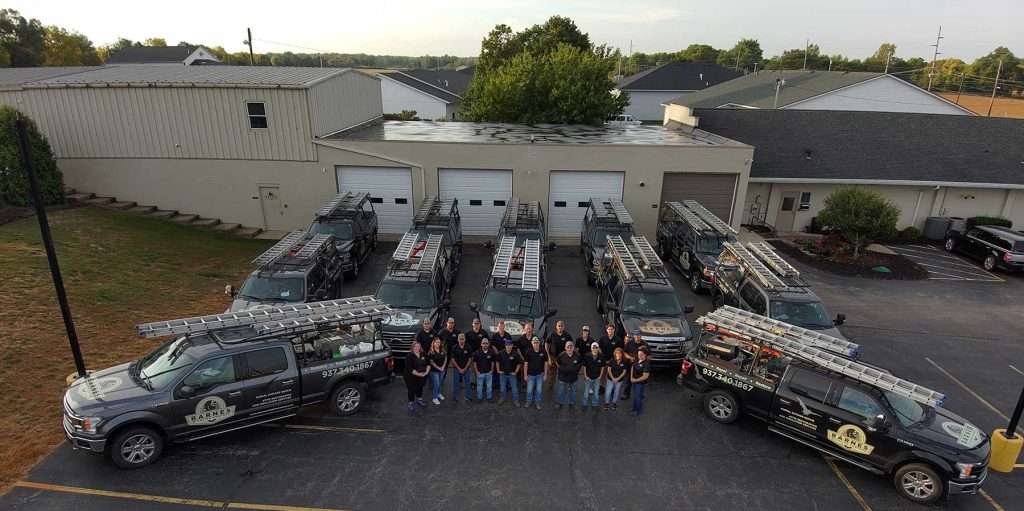Urban Coyote Safety Tips That Protect Your Home
At Barnes Wildlife Control, we understand the importance of keeping your home safe from wildlife threats so we present you with some Urban Coyote Safety Tips that protect your home, family and pets. While many people associate coyotes with rural areas, urban coyotes are becoming an increasingly common sight in cities and suburban neighborhoods.
Coyote populations have steadily increased across the Dayton, Ohio and Miami Valley Region over the past few decades, presenting challenges for homeowners, landowners, farmers, and wildlife managers. These highly adaptable predators thrive in various environments, from rural farmlands to suburban neighborhoods, where they can prey on livestock, pets, and small game. As a result, effective coyote control measures, including trapping, are necessary to maintain a balanced ecosystem.
In this blog post, we’ll dive into the rise of urban coyotes in the Dayton, Ohio region, their potential impact, and how you can take steps to keep your property safe.
Why Are Coyotes Moving Into Urban Areas?
Coyotes are incredibly adaptable creatures, which allows them to thrive in a variety of environments, including cities. Over the years, they have learned to live alongside humans and use urban landscapes to their advantage. Here are a few reasons why coyotes are moving into cities:
- Abundant Food Supply: Urban areas provide a steady food source for coyotes, including trash, pet food left outside, rodents, and small pets. Cities offer plenty of opportunities for these opportunistic feeders to find food, making it an ideal habitat for them.
- Reduced Predator Threats: In urban areas, coyotes face fewer natural predators. This lack of threat, combined with the availability of food and shelter, allows their populations to grow.
- Shelter and Safe Spaces: Coyotes can find shelter in urban areas in the form of alleys, under decks, and abandoned buildings. These spaces offer safety from predators and harsh weather, giving coyotes resting and breeding places.
- Human Tolerance: In many urban areas, people may not actively deter coyotes, allowing them to become more comfortable living in close proximity to humans. As a result, coyotes have adapted to living alongside us, though they tend to avoid direct contact.
Please do not leave your small pets out at night as they are vulnerable to coyote attacks.
Urban Coyote Safety Tips To Protect Your Home, Pets, and Family from Urban Coyotes
While urban coyotes are unlikely to approach humans, it’s still essential to take steps to reduce the risk of encounters and keep your home safe. Here are some tips for homeowners:
- Secure Trash and Food Sources: Coyotes are drawn to easy food sources, so it’s important to secure trash cans with tight-fitting lids. Avoid leaving pet food outside and clean up food scraps from outdoor areas, including grills and patios. If you have bird feeders, make sure seeds don’t spill onto the ground where coyotes and other animals might come to forage.
- Keep Pets Indoors or Supervised: Coyotes often target small pets, especially those left unattended outside. Always supervise pets, particularly at night, and keep them indoors when not in use. Consider installing a secure fence that is at least 6 feet tall and buried several inches underground to prevent coyotes from entering your yard.
- Install Motion-Activated Lights or Sprinklers: Coyotes are generally wary of humans and prefer to stay out of well-lit or high-traffic areas. Motion-activated lights or sprinklers can deter coyotes from approaching your home and help create an environment that feels less hospitable to them.
- Block Denning Sites: If you suspect coyotes are using your yard or property as a denning site, take steps to block any potential entry points under decks, sheds, or porches. Fencing, wire mesh, or other barriers can prevent coyotes from gaining access to these areas.
- Educate Your Neighbors: Coyotes are more likely to be attracted to neighborhoods with abundant food and shelter. Encourage your neighbors to follow the same precautions you are taking. Working together can help reduce the overall risk of urban coyotes in your area.
- Keep Your Yard Clean: Trim shrubs and trees that might provide cover for coyotes. Remove fallen fruit from trees and consider clearing out areas where small wildlife could hide, making it less attractive for coyotes to enter your property.
Trapping Is The Main Way To Remove Coyotes From Your Property
More Urban Coyote Safety Tips: What to Do If You Encounter a Coyote
While it’s uncommon to come into direct contact with an urban coyote, it’s still important to know what to do if you do see one:
- Do Not Approach Coyotes: Coyotes are generally wary of humans and will usually avoid interaction. Never try to approach or feed a coyote.
- Make Yourself Appear Larger: If a coyote seems unafraid or approaches you, stand tall and make yourself look larger. You can also clap your hands, shout, or wave your arms to scare the coyote off
- Keep Your Distance: If you encounter a coyote, slowly back away from the animal and try to put distance between you and it. Do not turn your back on the coyote, as this could provoke it.
- Contact a Professional Coyote Expert: If you notice a coyote acting aggressively or behaving unusually, or if you have concerns about a coyote near your home, contact Barnes Wildlife Control. Our experts can safely assess the situation and help remove the animal if necessary.
Though A Trapped Coyote May Appear Passive Never Approach It!
Coyote Trapping and Striking a Balance for Ohio’s Ecosystem
Coyote trapping remains a vital tool for Ohio landowners and Barnes Wildlife Control seeks to manage predator populations responsibly. By adhering to state regulations, using humane trapping methods, and selecting effective baits and lures, our coyote experts can control coyote numbers without compromising the welfare of non-target species. With our proper planning, ethical practices, and continuous monitoring, our coyote trapping practices in the Dayton Ohio and Miami Valley Region helps maintain a balanced ecosystem, protecting livestock, preserving native wildlife, and ensuring harmony between humans and these adaptable predators.
Top Coyote Trapping Techniques
Barnes Wildlife Control trappers commonly rely on two primary methods to capture coyotes: foot-hold traps and cable devices (also known as snares). Each approach offers distinct advantages, and the choice often depends on terrain, personal preference, and specific trapping objectives.
Foot-Hold Traps
Foot-hold traps are widely regarded as one of the most effective tools for coyote control. Typically featuring coil-spring or long-spring mechanisms, these traps are designed to catch an animal by the foot without causing significant harm. To enhance animal welfare, many modern foot-hold traps come with offset or rubber-padded jaws that reduce the likelihood of serious injury. Success with foot-hold traps hinges on proper set placement and concealment. Barnes Wildlife Control trappers carefully bed any trap so it sits securely in the ground and remains stable under a coyote’s weight. Scent control is equally crucial; even the slightest trace of human odor can discourage a cautious coyote from approaching.
Cable Devices – Snares
Cable devices, often referred to as snares, are also popular in Ohio for targeted coyote removal. These devices consist of a simple loop of cable designed to tighten around the animal’s neck or torso as it moves through a designated pathway. Snares are especially effective when placed along well-traveled coyote corridors, such as fence lines, brushy trails, or narrow creek crossings. Ohio has specific regulations regarding loop size, cable strength, and height above ground to minimize the risk of capturing non-target species. Barnes Wildlife Control always follow the current rules on cable device use and ensure we are placing them in a manner that aligns with humane trapping standards.
Contact Barnes Wildlife Control For Your Urban Coyote Problems
If you’re dealing with coyote activity on your property, especially during their mating season, it’s crucial to act quickly. Barnes Wildlife Control is here to provide professional coyote control, trapping and removal services, ensuring the safety and comfort of your home, family and pets.
Contact us today to schedule an inspection and learn more about how we can help you address your coyote issues. Let us protect your property from the unwanted presence of coyotes so you can enjoy your property in safety.
About Barnes Wildlife Control
Barnes Wildlife Control is a trusted provider of professional wildlife removal services. We specialize in humane and effective solutions for a wide range of wildlife issues, like skunks, raccoons , squirrels and bats. Our team of trained experts is dedicated to helping homeowners maintain safe and secure properties in Greater Dayton, Ohio, and surrounding areas.
For more information, visit our website or call us directly at (937) 340-1867.





